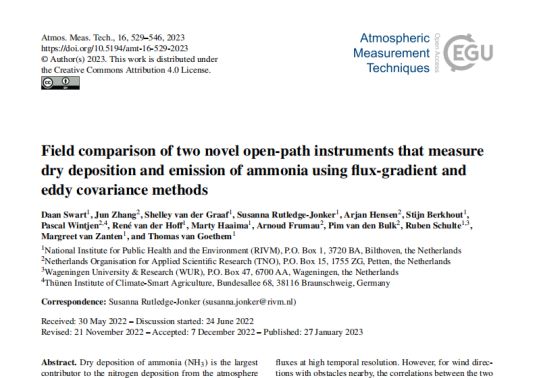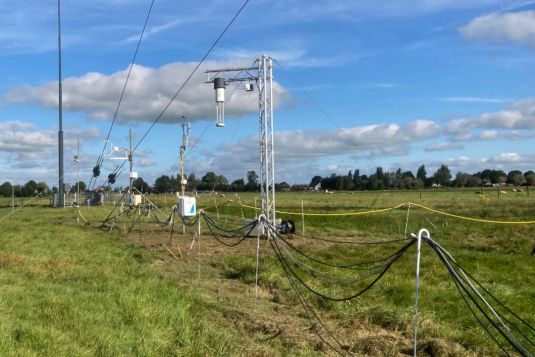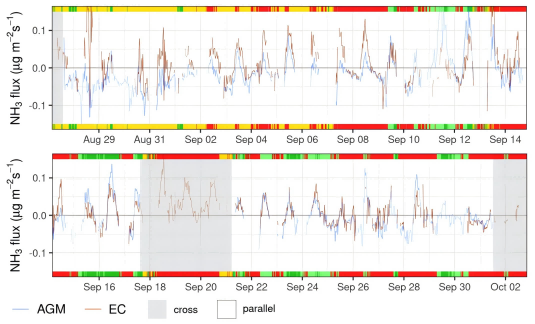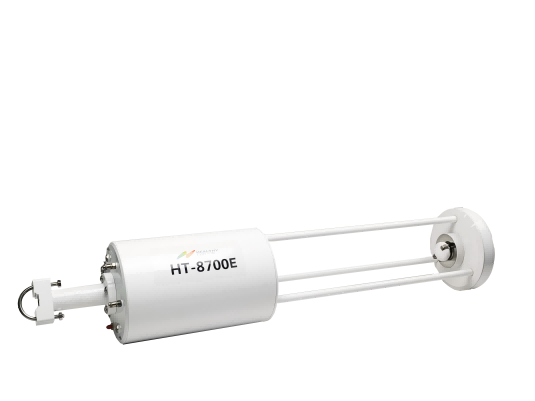 Home - TDLAS modules - Applications - From Laboratory to Farmland: Comparative Experiment of Two Advanced Ammonia Measurement Instruments
Home - TDLAS modules - Applications - From Laboratory to Farmland: Comparative Experiment of Two Advanced Ammonia Measurement Instruments A joint research team from the Netherlands Organisation for Applied Scientific Research (TNO) and the National Institute for Public Health and the Environment (RIVM) published a study titled "Field comparison of two novel open-path instruments that measure dry deposition and emission of ammonia using flux-gradient and eddy covariance methods." This research paper has been published in Atmospheric Measurement Techniques.

Experimental Background
Human activities through agriculture, industry, and combustion processes have altered the global nitrogen cycle, leading to unprecedented levels of reactive nitrogen (Nr) in the Earth's system. Ammonia (NH3) dry deposition is a significant component of nitrogen deposition, especially in the Netherlands, where it accounts for more than one-third of total nitrogen deposition. Therefore, accurately quantifying NH3 biosphere-atmosphere exchange is crucial for studying regional and global NH3 budgets, monitoring trends, assessing emission reduction effectiveness, and improving air quality and deposition models. However, data on direct long-term continuous measurements of NH3 exchange are relatively scarce.
Abstract
A five-week experiment conducted at the Ruisdael station in Cabauw, the Netherlands, compared two novel open-path measurement devices. The experiment utilized the Healthy Photon HT8700E atmospheric ammonia laser open-path analyzer and another laser open-path analyzer based on aerodynamic gradient technology. The two instruments employed different measurement principles and technologies, the former using the eddy covariance method (EC) and the latter using the aerodynamic gradient method (AGM). Despite their differing principles, the measurement results were highly similar under conditions of unobstructed uniform terrain, with a correlation coefficient of 0.87 and a cumulative flux difference of about 10%.

Instrument Deployment
This study compared the performance of the HT8700E atmospheric ammonia laser open-path analyzer based on eddy covariance technology and another laser open-path analyzer based on aerodynamic gradient technology in measuring ammonia (NH3) dry deposition and emissions.

Location: Grassland at the Cabauw research station, the Netherlands
Duration: August 24 to October 11, 2021, for a period of 7 weeks
Setup:
The HT8700E was mounted on a steel frame with the optical path center 2.80 meters above the ground.
The other laser open-path analyzer was placed in a small container with two 22.1-meter optical paths at heights of 0.76 meters and 2.29 meters.
Additional equipment included ultrasonic anemometers and other auxiliary instruments to measure three-dimensional wind speed and gas concentrations.
Experimental Results
Flux Measurements:
The results of the two instruments in measuring ammonia flux were very similar (correlation coefficient r = 0.87). The cumulative flux difference was about 10%, provided the upwind terrain was uniform and unobstructed. The variation in ammonia flux measured by the HT8700 and the other laser open-path analyzer showed a high degree of consistency.

Operational Time:
The HT8700E had lower data validity during and shortly after rain, and its early product optical mirror coating might degrade, resulting in about 21% data loss. Healthy Photon has since upgraded the optical mirror with a new coating technology to enhance corrosion resistance, effectively solving the data loss issue, and has delivered the improved product to customers. The other laser open-path analyzer, once operational, could run continuously for up to 100% of the time but required periodic recalibration (35% of the 7-week runtime).
The HealthyPhoton HT8700E, based on eddy covariance technology, offers the most direct surface-atmosphere gas exchange measurements and employs quantum cascade laser (QCL) technology, avoiding signal loss caused by sampling tubes in closed-path systems. It has low power requirements, making it easier to install and suitable for monitoring in remote areas.

Despite limited independent operational time under harsh weather conditions, the HT8700E can still provide good results under appropriate conditions. The latest upgraded version of the HT8700E includes automatic cleaning, rain sensing, and lens heating modules to better cope with field environmental conditions, ensuring more accurate and reliable long-term field observations.

Refer:
Swart D.et al., Field comparison of two novel open-path instruments that measure dry deposition and emission of ammonia using flux-gradient and eddy covariance methods. Atmospheric Measurement Techniques, 16(2), 529-546, 2023.
RELATED PRODUCT:
 Tel:+86-400 961 6990 Email:info@healthyphoton.com
Add:Room 305, Building 1, Zhongchuang Science Park, Jinyuan Road, Panhuo Street, Yinzhou District, Ningbo City,China
Tel:+86-400 961 6990 Email:info@healthyphoton.com
Add:Room 305, Building 1, Zhongchuang Science Park, Jinyuan Road, Panhuo Street, Yinzhou District, Ningbo City,China


